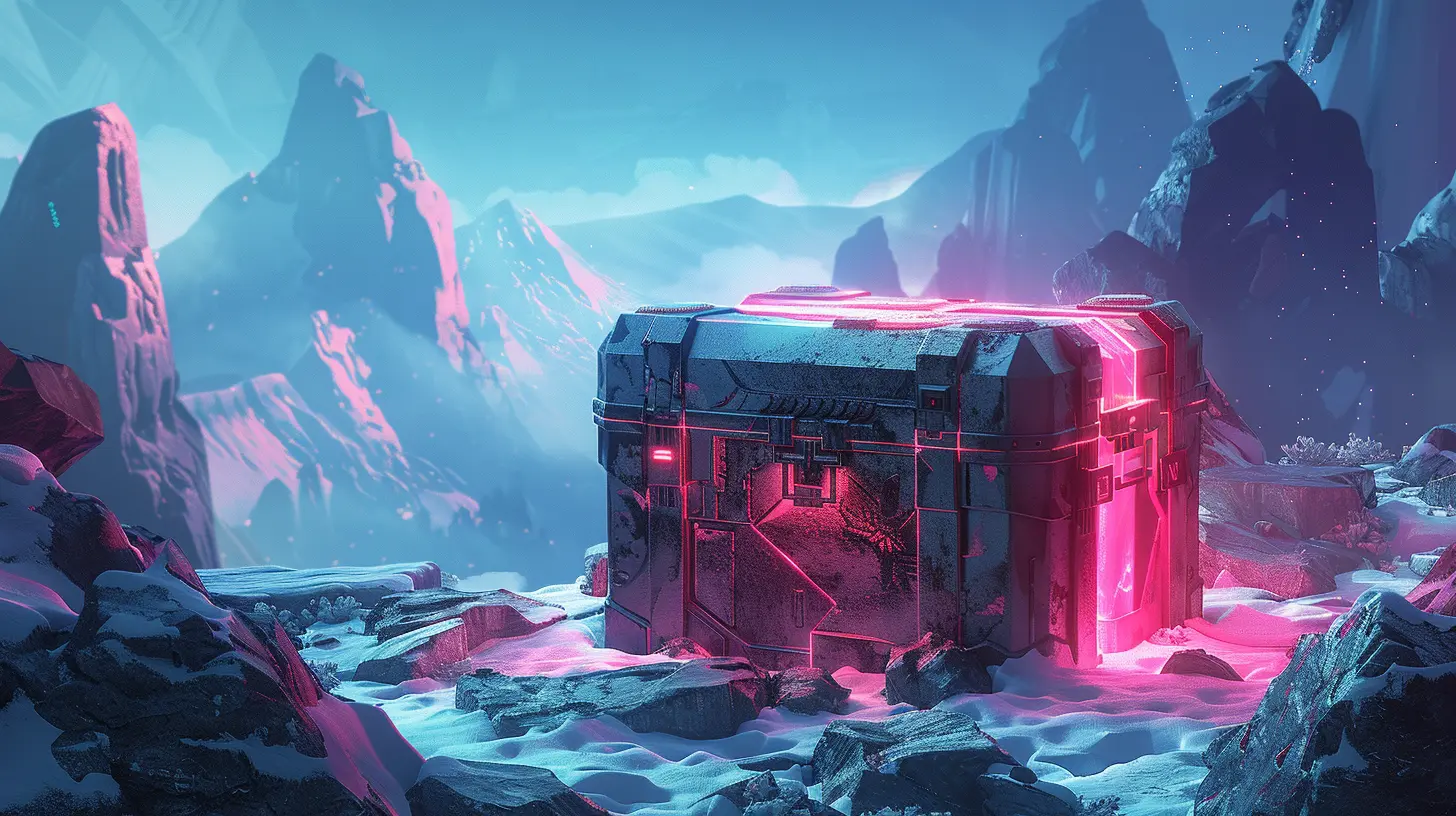17 March 2025
Loot boxes. Love ’em or hate ’em, they’ve been one of the most polarizing mechanics in gaming over the past decade. For years, game developers and publishers used these flashy, randomized rewards to reel players in while raking in big profits. But, as regulations tighten and consumer backlash grows, loot boxes are starting to fall from favor. This shift isn’t just a minor bump in the road—it’s a seismic event that has the potential to reshape how games are made, funded, and experienced. Let’s roll up our sleeves and dive into how the fall of loot boxes is impacting game development, player experience, and the industry as a whole.
What Are Loot Boxes, Anyway?
Before we get into the nitty-gritty, let’s make sure we’re on the same page. Loot boxes are in-game items that players purchase (with real or virtual currency) to get random rewards. Think of them as gaming's version of a lucky dip—you never know what you’re going to get. Sometimes, you score a rare character skin or a powerful weapon, and other times... well, you get a few coins and a slap in the face.For developers, loot boxes became a lucrative cash cow, especially in free-to-play games. They offered a way to monetize games long after the initial purchase. But for players, they quickly became a source of frustration—leading to accusations of gambling mechanics, pay-to-win schemes, and downright shady practices.
The Fall of Loot Boxes: What Went Wrong?
Loot boxes didn’t just fall out of favor overnight; they’ve been steadily losing ground for years. Let’s break down what led to their decline:1. The Regulatory Hammer
Governments around the world started paying close attention to loot boxes, and the verdict wasn’t pretty. Countries like Belgium and the Netherlands outright banned them, labeling them as a form of gambling. The UK and the US have followed with investigations and discussions on regulation. The argument? Loot boxes prey on younger gamers and exploit addictive tendencies.This increased scrutiny made it harder for developers to justify their inclusion. The threat of legal action combined with negative PR turned loot boxes from a cash cow into a legal liability.
2. Consumer Backlash
Remember the fiasco with Star Wars Battlefront II? That was a turning point. Gamers were furious about the blatant pay-to-win mechanics tied to loot boxes. The outrage spread like wildfire, prompting widespread criticism on social media, forums, and even mainstream news outlets. Developers started realizing that while loot boxes could fatten their wallets, they could also burn their reputation to the ground.3. Shift Toward Transparency
Players began demanding transparency. They wanted to know the odds of getting rare items, and in some cases, they wanted alternatives to randomness altogether. This forced some companies to reveal odds or rework their systems, which—surprise, surprise—made loot boxes less profitable.4. Emerging Alternatives
As loot boxes faced backlash, developers started looking for other ways to make money. Battle passes, cosmetics, and direct microtransactions are now becoming the go-to options. These methods feel less predatory and give players more control over what they’re paying for.
How Developers Are Adjusting
So, what does the fall of loot boxes mean for developers? Well, it’s complicated. On one hand, they’re losing a significant revenue stream. On the other, they’re forced to rethink their monetization strategies and, in some cases, their game design altogether. Here’s how the industry is adapting:1. Shifting Toward Battle Pass Systems
Battle passes are like the cool, responsible cousin of loot boxes. Instead of relying on random rewards, players progress through a tiered system, unlocking rewards as they go. It’s predictable, transparent, and feels fairer. Games like Fortnite, Apex Legends, and Call of Duty: Warzone have all capitalized on this model, and it’s proving to be a hit with players.For developers, battle passes provide a steady stream of income and keep players engaged over the long haul. But they also require a lot of upfront planning and regular content updates to keep things fresh.
2. Direct Purchases and Customization
Many studios are pivoting to direct microtransactions, where players can buy the exact items they want. Want that shiny new skin for your favorite character? You can pay for it instead of gambling on a loot box.This model respects the player’s wallet (and sanity) but also means developers need to create a steady flow of desirable content. It’s a creative challenge that requires balancing player satisfaction with profitability.
3. Focus on Player Retention
Without the addictive pull of loot boxes, developers are doubling down on keeping players engaged. We’re seeing more frequent updates, engaging storylines, and live-service models that reward consistent play. In other words, the focus is shifting from squeezing every penny out of players to actually giving them a reason to stick around.4. Emphasis on Ethical Monetization
In a post-loot-box world, there’s growing pressure for ethical monetization. Developers are starting to think long-term. Exploiting players for short-term gain? That’s a surefire recipe for disaster. Instead, companies are exploring ways to build trust and loyalty, which can lead to sustained revenue.
The Ripple Effect on Game Design
Here’s the kicker: the fall of loot boxes doesn’t just affect how developers make money—it changes how games are designed altogether. Why? Because monetization and gameplay are often intertwined.1. More Thoughtful Progression Systems
Games that relied on loot boxes often had progression systems designed to nudge players into spending money. Without loot boxes, developers are rethinking how progression works. Expect to see more thoughtful and rewarding systems that don’t leave you grinding for hours or pulling out your credit card just to get ahead.2. Revitalized Creativity
When loot boxes were the norm, some developers leaned on them as a crutch. Now, with that crutch gone, there’s a renewed emphasis on creativity. Studios are experimenting with new ideas to keep players engaged, from innovative gameplay mechanics to unique narrative experiences.3. A Shift in Player Expectations
Players are becoming more vocal about what they want (and don’t want). They’re demanding fair monetization, meaningful progression, and, most importantly, games that respect their time and money. This shift in expectations is pushing developers to deliver higher-quality experiences.Players Win—But at What Cost?
The fall of loot boxes is a win for players, right? Well, yes and no. While it’s great to see less predatory monetization, this shift isn’t without its downsides.1. Higher Game Prices
With loot boxes out of the picture, developers may pass the loss onto players in the form of higher base game prices or more expensive DLCs. After all, creating games isn’t cheap, and studios need to recoup their investment somehow.2. The Rise of FOMO
Battle passes and limited-time events can stoke FOMO (fear of missing out), pushing players to spend money to keep up. It’s less controversial than loot boxes, sure, but it’s not entirely problem-free.3. Smaller Studios Feel the Pinch
For big studios, losing loot box revenue is a blow—but not a fatal one. Smaller studios, however, may struggle to stay afloat without that extra income. This could limit innovation in the indie scene, where every penny counts.What’s Next for the Gaming Industry?
So, where do we go from here? As the dust settles, the gaming industry is finding its footing in a post-loot-box world. The focus is shifting toward transparency, player choice, and long-term engagement. And while there are bound to be growing pains, this change has the potential to create a healthier, more sustainable gaming ecosystem.One thing’s for sure: developers can no longer rely on predatory monetization to make a quick buck. The spotlight is now on delivering value—and that’s a win for everyone.







Russell Turner
Positive shift towards player-centric design.
March 28, 2025 at 4:19 AM